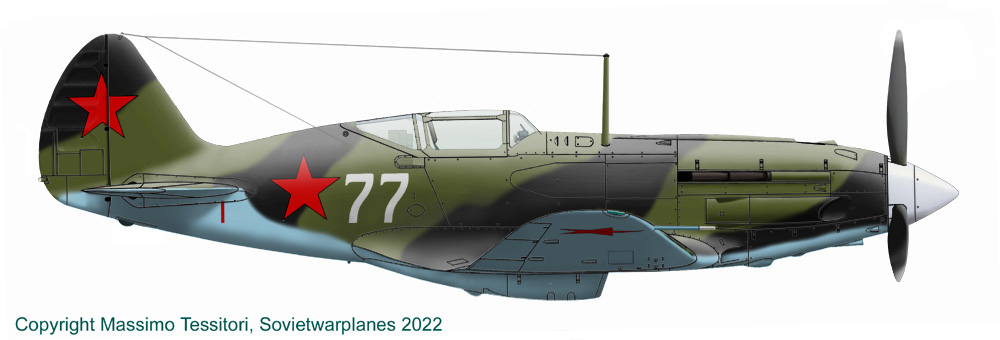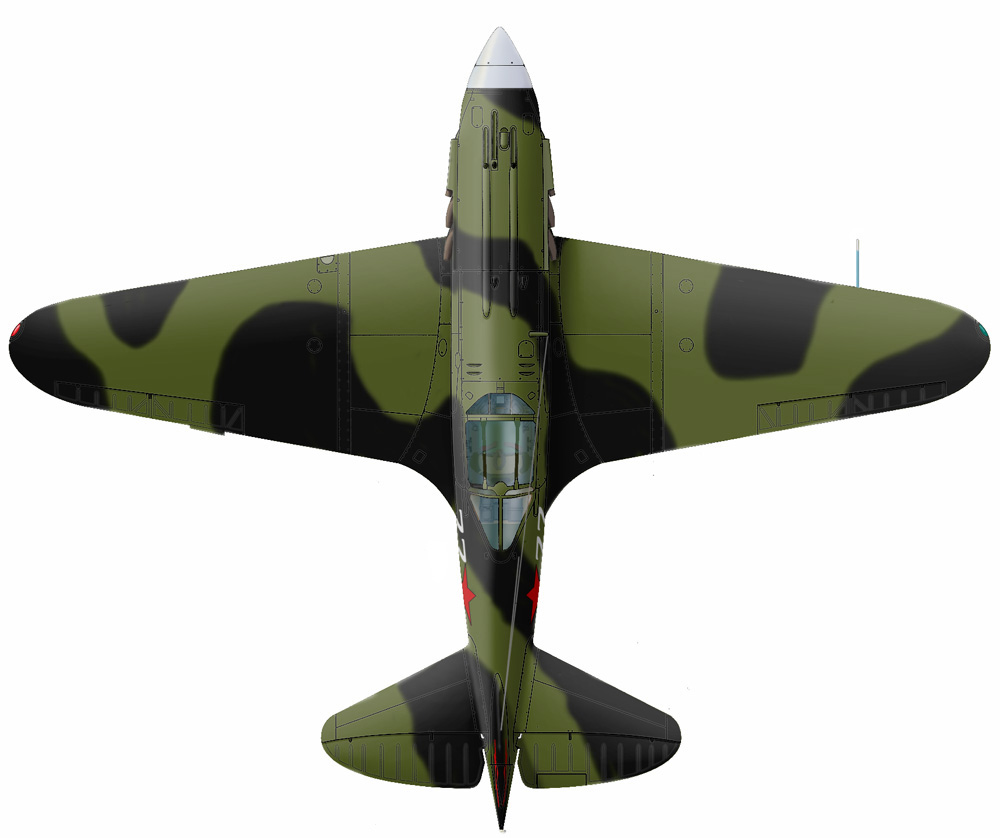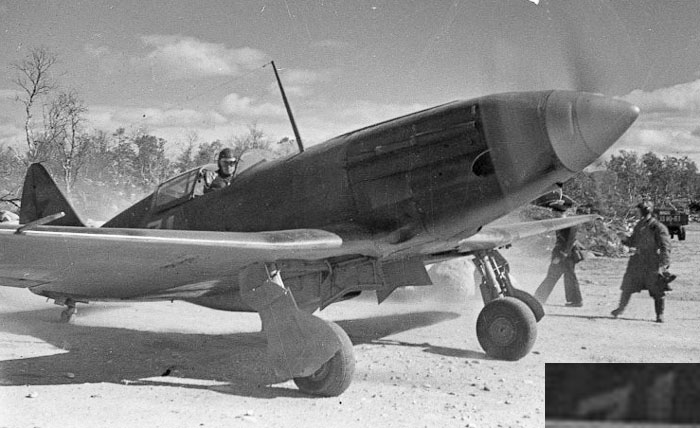
Photo of plane 31 or 71; according to Ria Novosti and Aviamaster, this was the plane of pilot Zakhar Sorokin in the summer 1941, and was numbered 71.
While the image seems to confirm that the pilot, tall and with squared chin, was Sorokin, a close-up of the top part of the number and a comparison with the font visible on the photo of plane 77 suggests that the number could be 31 instead. There are not known images where the number can be seen better than here, so one can wonder if 71 is a positively known data or a different interpretation of this image.
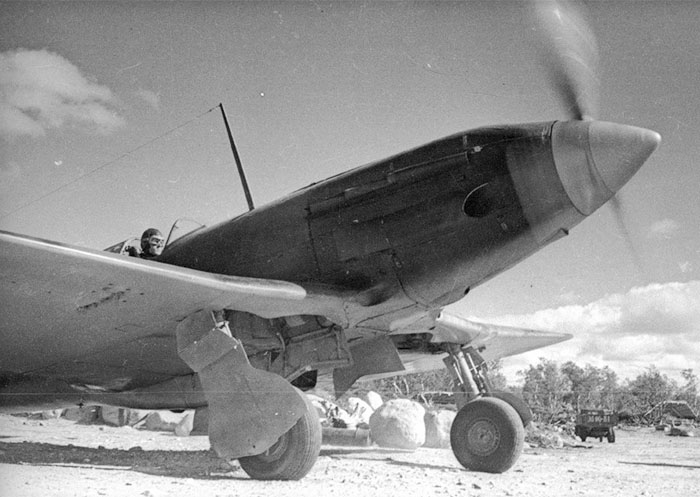
Another closer photo of plane 31, showing some sharp details.
This MiG-3 is unusual in many respects; its characteristics seem to be:
- late type, with radio mast, but without slats (as visible for the pitot on the leading edge instead of below it); if the planes were delivered in July 1941, they could be a transition series between early and late style MiG-3;
- camouflaged with green and black uppersurfaces, with light blue undersurfaces, as standard, but the camo pattern isonly marginally visible and it is not clear if it resembles the one of plane 77 or the standard NKAP one of June 1941; probably the plane was delivered with solid green uppersurfaces, and the black was made in the unit;
- the spinner appears white, but it could easily have been mixed with alumiunum powder to give strenght to the paint as visible from other photos of the same unit;
- the prop disk appears light; it is unclear if the blades were worn up to show the aluminum color, or if they reflected the sky because they were painted in glossy black as visible on other photos of planes of the same unit;
Images from http://ava.org.ru/iap/2gm.htm
Left: MiG-3 of Lt. Sorokin. It's not clear if it is one of the planes shown above. The silver shade of the spinner is evident.
Lieutnant Zakhar Artiomovich Sorokin arrived to this unit in July 1942,
with other Siberian pilots, after having started the war in service in
the Black Sea Fleet in Sevastopol. The MiGís first combat missions were
on July 19, 1941, when 2 of them together with 8 other Naval fighters
intercepted six Ju-88 escorted by Bf-109 and Bf-110 attacking Vayenga-1
and Vayenga-2 airfields. One of the MiGs was flown by Sorokin. Trying
to pursue the bombers he encountered the "Messerschmitts" that were trying
to clear the airspace for their bombers. In this air combat Lieutenant
Sorokin gained his first victory, he managed to shoot down a Bf-110.
Sorokinís MiG-3 was damaged the first time on the 21st of July, while
he was trying to intercept German bombers.
He had scored 4 victories by October and was awarded by Order of Red Banner.
On 25 of October in 1941 Lieutenant Sorokin, together with D. Sokolov,
got airborne for a combat mission. He downed a Me-110 in the first attack
in an air combat with a group of enemies fighters. Next he attacked a
second one and ran out of ammo. Then he was hit in the right leg. At the
same moment he noticed that his wingman was attacked by a Messerschmitt.
Sorokin came in to help ramming the tail of the enemy plane with his propeller.
This caused a belly landing of the Messerschmitt. However the Sorokinís
fighter had to land on a frozen lake and to fight with the crew of the
German fighter, killing them. After 6 days and 70 km rambling in the tundra,
loosing blood all the time, he was rescued by ski troopers. His injured
and frozen feet were amputated at the hospital. Sorokin passed 9 months
in hospitals and survived several risky surgical operations. He managed
to get back to his regiment with both artificial feet ad to fly again.
On April 19th of 1943, he took of again for combat mission and scored
his 7th victory over a Me-110.
In July 1944, Sorokin was promoted to captain.
Sorokin took part totally in 267 combat mission and achieved 18
victories totally during the war time.

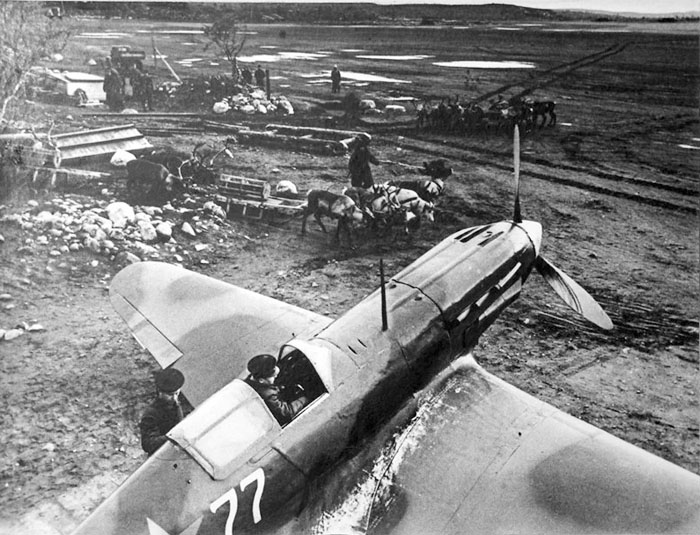
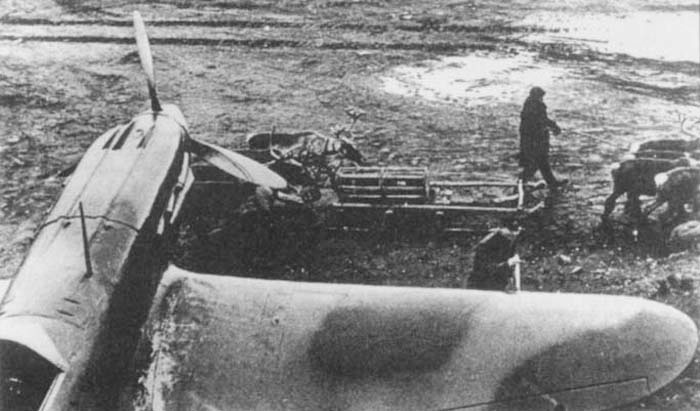
Plane 77 appears in many shots, but this one is the first published that shows the uncropped number on the fuselage.
The images are particularly noticeable because of the Lapps with their reindeer helping the VVS ground crew. Sleighs were used on the unsnowed ground too. The objects on the canisters look like bombs, probably for bombers SB that were in the 72 SAP; this SAP got Pe-2 as well since July 1942.
Images from http://ava.org.ru/iap/2gm.htm
This MiG-3 is unusual in many respects; its characteristics seem to be:
- late type, with radio mast, but without slats (as visible for the pitot on the leading edge instead of below it); if the planes were delivered in July 1941, they could be a transition series between early and late style MiG-3;
- camouflaged with green and black uppersurfaces, with light blue undersurfaces, as standard, but the camouflage pattern of the wings is unusual, not the same of the NKAP template of June 1941 that showed bands from the front to the rear edge of the wings; probably the plane was delivered with solid green uppersurfaces, and the black was made in the unit;
- the spinner appears white, but it could easily be mixed with alumiunum powder to give strenghth to the paint as visible from other photos of the same unit;
- it is unclear if the blades were worn up to show the aluminum color, or if they reflected the sky because they were painted in glossy black as visible on other photos of planes of the same unit; oil leakages are visible on their rear face.
Below: profile and top view of plane 77. The camouflage pattern, where not visible on photos, was guessed.
